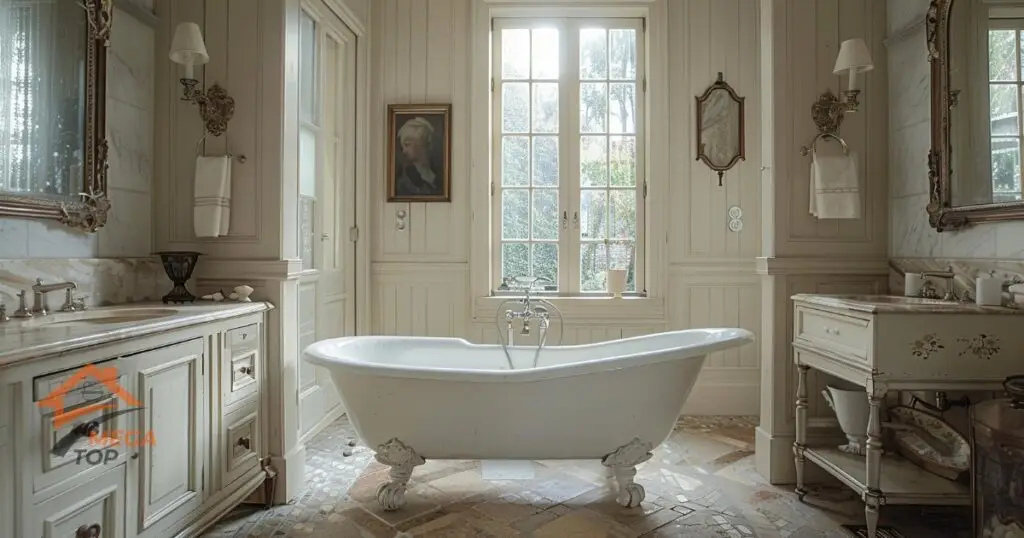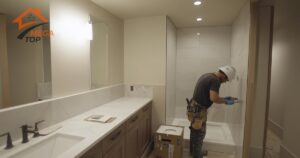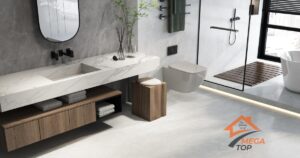What is Bathtub Resurfacing?
Bathtub resurfacing, also known as reglazing or refinishing, is a process that restores the surface of an old or damaged tub. Instead of replacing the entire bathtub, resurfacing involves repairing chips and scratches and applying a durable coating to make the tub look brand new.
Common Signs Your Tub May Need Resurfacing
- Stains or Discoloration: Persistent stains that cleaning won’t remove.
- Chips or Cracks: Minor surface damage that doesn’t affect structural integrity.
- Dull Finish: Worn-out coatings that no longer shine.
Benefits of Resurfacing an Old Bathtub
Refinishing your bathtub offers several advantages over replacing it entirely.
Cost Savings Compared to Replacement
- Resurfacing costs significantly less than purchasing and installing a new tub.
- Avoids the expenses of demolition and plumbing adjustments.
Extends the Life of Your Existing Tub
- Adds 10–15 years to the lifespan of your bathtub with proper care.
Environmentally Friendly Option
- Reduces waste by restoring your existing tub rather than sending it to a landfill.
Types of Bathtubs That Can Be Resurfaced
Most bathtubs can be resurfaced, but the material and condition of the tub are important considerations.
Materials Suitable for Resurfacing
- Porcelain: A common candidate for refinishing due to its durable structure.
- Enamel Over Steel: Can be reglazed effectively to restore the finish.
- Fiberglass: Often refinished to repair cracks and improve appearance.
Condition of the Tub
- Suitable for Resurfacing: Minor chips, scratches, or discoloration.
- Better for Replacement: Extensive rust, severe structural damage, or deep cracks.
How the Bathtub Renovation Process Works
The resurfacing process involves multiple steps to ensure a smooth, durable finish.
Step-by-Step Tub Resurfacing
- Surface Cleaning: Remove dirt, soap scum, and old coatings.
- Repair Damage: Fill chips and cracks with a repair compound.
- Apply Primer: Create a smooth, adhesive base for the refinishing coat.
- Coating Application: Spray or roll on a reglazing product in multiple layers.
- Final Polishing: Buff the surface for a glossy, professional look.
Timeframe for Completion
- Process Duration: Typically 3–6 hours, depending on the size and condition of the tub.
- Curing Time: Allow 24–48 hours before using the bathtub.
DIY vs Professional Bathtub Resurfacing
Deciding between DIY and professional resurfacing depends on your budget, skill level, and desired results.
Pros and Cons of DIY Resurfacing Kits
- Pros:
- Affordable, costing $50–$200.
- Convenient for small touch-ups or limited budgets.
- Cons:
- Risk of uneven application and premature peeling.
- Less durable than professional finishes.
Advantages of Hiring Professionals
- Higher Quality Results: Durable coatings and a smoother finish.
- Warranty: Many professionals offer warranties for their work.
- Expertise: Professionals can address complex damage effectively.
Costs of Bathtub Resurfacing
Average Price Range
- DIY Resurfacing Kits: $50–$200.
- Professional Reglazing Services: $300–$800.
Factors That Influence Cost
- Tub Size: Larger tubs require more material and labor.
- Extent of Damage: Heavily damaged tubs may need additional repairs.
- Material: Porcelain and fiberglass refinishing may vary in cost.
Alternatives to Bathtub Resurfacing
If resurfacing isn’t suitable, there are other ways to renovate your bathtub.
Tub Liners and Inserts
- What They Are: Custom-fit liners that cover the existing tub.
- Pros: Easy to install and long-lasting.
- Cons: Higher cost, starting at $1,500.
Full Replacement
- When to Choose Replacement: For tubs with severe damage or outdated designs.
- Costs: New tubs and installation can cost $1,000–$3,000 or more.
Bathtub resurfacing is a cost-effective and eco-friendly way to give your old tub a new lease on life. Whether you choose to DIY or hire a professional, proper care and maintenance can extend its lifespan for years to come. Ready to rejuvenate your bathroom? Start your bathtub renovation today!
FAQ
Most tubs can be resurfaced, but excessive rust or structural damage may require replacement.
A professionally resurfaced tub can last 10–15 years with proper care.
DIY kits cost $50–$200, while professional services range from $300–$800.
Yes, resurfacing reduces waste by restoring your tub instead of replacing it.
No, you’ll need to wait 24–48 hours for the surface to cure fully.





